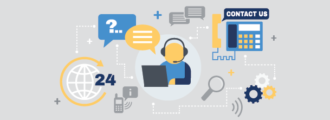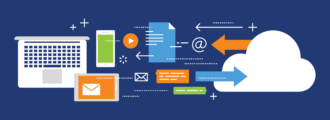Tax laws and compliance requirements are complex. And to complicate them even further, the 2018 US Supreme Court ruling South Dakota v. Wayfair, Inc. allows states to begin collecting sales and use taxes from remote sellers that meet certain economic thresholds, even if they’re doing business online.
In this ever-changing tax environment, many JD Edwards organizations are turning to technology and automation to stay compliant, but choosing the right tax automation solution can simply prove to be another challenge. How do you know what will work best for your business? While every company’s specific needs are different, in general, there are five major components of the process that can be automated. (Keep in mind, however, that you will need to ensure that whatever solution you choose still reduces the chances of manual errors.)
1) Tax Rate Tables
Tax rate tables provide accurate rates at a jurisdiction level, such as state, county, city, district, and other special jurisdictions. There are currently over 6,500 taxing jurisdictions within the US with rate changes every month. Such constant, widespread change makes regular maintenance and updates essential to keeping an accurate rate table. And don’t forget about the need to expand those rate tables in the future if necessary due to the formation of new jurisdictions, cities being divided up, and even more special taxing jurisdictions within each of those. Your automated tax solution will need to correctly determine the appropriate taxing situs for each transaction, correctly assign jurisdiction codes to customer address information, and use systematic updates of transaction tax rate and jurisdiction information.
2) Tax Calculation Query
A tax calculation query calculates and returns the appropriate tax amount to the billing system and provides audit support detail. It references the tax matrix, tax status, and rate tables for an ultimate determination of whether tax is applicable and what amount to charge. The calculation query must be very flexible and should evaluate tax on a line item basis. It also must be able to select the correct jurisdiction based on a zip/postal code or some other location information and allow for maximum tax rates or partial tax calculations as well as manual overrides. The tax must be correctly calculated for each transaction, local taxes correctly allocated, and create a central repository for tax reporting.
3) Taxability Rules
Taxability of your products and services must be taken into account for correct sales tax calculations. Taxability rules contain information relating to invoice line items or product codes and correspond each item to a taxability decision within each state. The taxability table should include the ability to allow for customizations to the system to automate handling special tax requirements, (or you’ll find yourself with a headache later on).
4) Tax Return Processing
A tax return program can import the necessary data either directly from a billing system or some other summary file and enter that information into exact replicas of state tax forms (such as signature-ready returns including home-rule jurisdiction returns). A solution that can automate the entire sales tax return filing process can save a tremendous amount of time, money, and risk of human error in completing the forms.
5) Exemption/Exception Management
The more taxability exemptions and exceptions there are, (and the more complex they are), the less likely a native system will be able to manage them as effectively as your business will need. Areas that can be addressed and automated include functionality for customers, products, jurisdictions, and special conditions.
Getting Started with Tax Automation
The right tax solution can deliver many benefits to your organization, including improved cash flow, simplified payments, more peace of mind, and the freedom to focus on other areas of your business. To help you select the right tax automation solution for your company, consider working with an expert.
Our JD Edwards Tax Compliance consultants can determine the best solution based on your unique business needs. Let our expert consultants help you automate your taxes, so you can focus on what you do best: growing your business.



